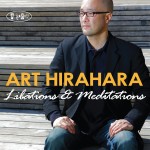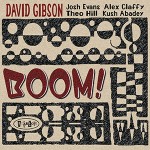Wolfe’s quartet shines navigating the twelve tracks here, which include eleven original compositions by the bassist, and Jerome Kern’s now-jazz standard “All The Things You Are.” Wolfe favors ballads, and Dillard’s saxophone abides throughout. He delivers the most gentle touch on “Hat In Hand” with a luscious soprano take that is echoed by Orrin Evan’s piano. “Love Is Near” conveys a sensual message via Dillard’s tenor, the wee small hours brushwork of Edwards, and a reserved piano and bass. If their approach was less than honest, the melancholy mood of “If Only” wouldn’t work. Clearly it does. Wolfe is a patient storyteller.
When the band does turn up the burners on tracks like “Chronos,” a complex funky swinger and the devilishly hip title track, the cohesion of the quartet is evident. Same for “S.T.F.U.” where trumpeter Josh Evans joins the quartet. Their controlled zeal conjures a vision of the players in Brooks Brothers suits, ties now appropriately undone.
Track Listing: Heroist; Hat In Hand; Community; Love Is Near; S.T.F.U.; Camelot’s Lean; Chronos; All The Things You Are; The Whisperer; Becoming Brothers; The Balcony; If Only.
Personnel: Ben Wolfe: bass; Orrin Evans: piano; Donald Edwards; drums; Stacy Dillard: soprano saxophone, tenor saxophone; Josh Evans: trumpet (trk 5).
— Mark Corroto







